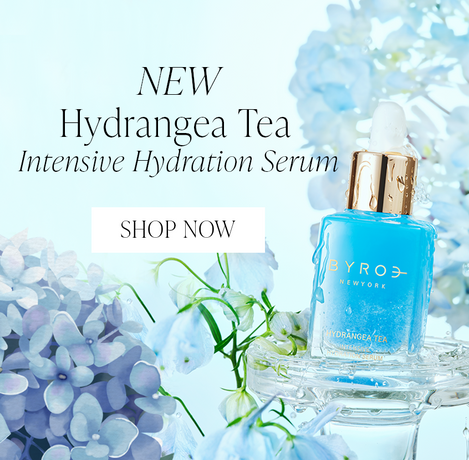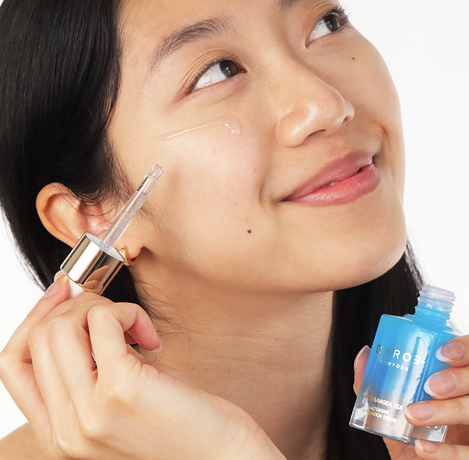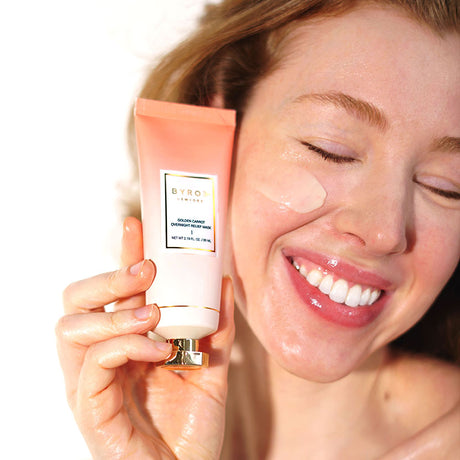Five Different Types of Cleansers, Explained
Are you confused by all of the cleansers available on the market? We know it can get confusing when there just so many different types from — cream to milk to foam? It’s almost impossible to figure out which one is the right for you and your skin issues. Keep reading to find out the difference between all of these different types of cleansers and who they work best for.
WATER
Water-based cleansers can be a confusing term as you can have a water-based cleanser that falls into more than one of these categories but for this specifically, we are referring to micellar water or cleansing waters. Typically, these are water-based liquids that contain tiny amounts of microspheres of oil, called micelles, that attract dirt and impurities pulling them away from your skin. These formulas are usually incredibly lightweight and contain a blend of purified water, humectants like glycerin, and mild surfactants that don’t need to be rinsed off. They make for great gentle morning cleansers or as a first-cleanse to remover makeup, dirt, and debris from the skin.
GOOD FOR: Depending on how much makeup you wear and the sensitivity of your skin, these waters are usually great for all skin types. While they are marketed as being rinse-free if you have more sensitive skin we’d suggest going in with a rinse as the lingering surfactants can cause irritation. These waters are also great for travel but we wouldn’t recommend ditching all of your other cleansers for them.
Water-based cleansers can be a confusing term as you can have a water-based cleanser that falls into more than one of these categories but for this specifically, we are referring to micellar water or cleansing waters. Typically, these are water-based liquids that contain tiny amounts of microspheres of oil, called micelles, that attract dirt and impurities pulling them away from your skin. These formulas are usually incredibly lightweight and contain a blend of purified water, humectants like glycerin, and mild surfactants that don’t need to be rinsed off. They make for great gentle morning cleansers or as a first-cleanse to remover makeup, dirt, and debris from the skin.
GOOD FOR: Depending on how much makeup you wear and the sensitivity of your skin, these waters are usually great for all skin types. While they are marketed as being rinse-free if you have more sensitive skin we’d suggest going in with a rinse as the lingering surfactants can cause irritation. These waters are also great for travel but we wouldn’t recommend ditching all of your other cleansers for them.
FOAM
Foaming cleansers are simply cleansers that have some sort of foaming, sudsy-ness to them. They tend to come in pump (or tube) style components that immediately come out as a cloud of foam making application easy and we admit a bit fun! The foam is a great way to really deep clean the skin getting rid of every trace of dirt and debris, especially in hard to reach areas like the corners of your nose, which is why they’re most often recommended for oily and acne-prone skin.
But, they tend to have a bad reputation as many choose to use sodium-lauryl-sulfate (SLS) as their surfactant of choice. This surfactant is known to cause irritation for some skin types but rest-assured, not all foam cleansers are created equally. We’re not entirely adverse as these are an excellent way to combat excess oil production keeping skin clear and breakout free.
GOOD FOR: Like cleansing waters, these can work well for all skin types but most specifically for those prone to excess sebum and breakouts as they can be stripping on drier, more sensitive skin.
Foaming cleansers are simply cleansers that have some sort of foaming, sudsy-ness to them. They tend to come in pump (or tube) style components that immediately come out as a cloud of foam making application easy and we admit a bit fun! The foam is a great way to really deep clean the skin getting rid of every trace of dirt and debris, especially in hard to reach areas like the corners of your nose, which is why they’re most often recommended for oily and acne-prone skin.
But, they tend to have a bad reputation as many choose to use sodium-lauryl-sulfate (SLS) as their surfactant of choice. This surfactant is known to cause irritation for some skin types but rest-assured, not all foam cleansers are created equally. We’re not entirely adverse as these are an excellent way to combat excess oil production keeping skin clear and breakout free.
GOOD FOR: Like cleansing waters, these can work well for all skin types but most specifically for those prone to excess sebum and breakouts as they can be stripping on drier, more sensitive skin.
GEL
Gel cleansers are known for their vicious jelly-like texture but similar to foaming cleansers they do mildly foam upon contact with water but not nearly as much or as light and airy as foaming ones. Another quality that they have in common is their ability to deep clean the skin. We would say the most distinctive difference between the two is simply the texture. Depending on your preference, you could go either way and get pretty much the same effect.
GOOD FOR: These work best for normal to combination skin as they provide that deep cleanse you want while being a bit gentler than foaming ones. We’d suggest trying out a variety of formulas and paying close attention to how your skin reacts before deciding on one that works well for your skin type. Remember, your skin should never feel tight or dry after cleansing and if it does — it’s time to ditch that cleanser ASAP.
Gel cleansers are known for their vicious jelly-like texture but similar to foaming cleansers they do mildly foam upon contact with water but not nearly as much or as light and airy as foaming ones. Another quality that they have in common is their ability to deep clean the skin. We would say the most distinctive difference between the two is simply the texture. Depending on your preference, you could go either way and get pretty much the same effect.
GOOD FOR: These work best for normal to combination skin as they provide that deep cleanse you want while being a bit gentler than foaming ones. We’d suggest trying out a variety of formulas and paying close attention to how your skin reacts before deciding on one that works well for your skin type. Remember, your skin should never feel tight or dry after cleansing and if it does — it’s time to ditch that cleanser ASAP.
OIL
Oil cleansers are emollient balmy textures that melt into an oil upon contact with the skin. These are known for their ability to attract oil-based dirt and impurities, dissolve makeup and SPF — without drying out the skin. Depending on the formula, these can either be used as a makeup remover or your go-to cleanser if you have drier, more sensitive skin.
GOOD FOR: Despite common misconceptions, everyone can benefit from using an oil-based cleanser. This includes those with oily skin types as they are made to attract oil, nourish, and deep clean the skin. Plus, their ability to attract oil will help rid the skin of excess oil working to regulate oil production while keeping skin clear.
Oil cleansers are emollient balmy textures that melt into an oil upon contact with the skin. These are known for their ability to attract oil-based dirt and impurities, dissolve makeup and SPF — without drying out the skin. Depending on the formula, these can either be used as a makeup remover or your go-to cleanser if you have drier, more sensitive skin.
GOOD FOR: Despite common misconceptions, everyone can benefit from using an oil-based cleanser. This includes those with oily skin types as they are made to attract oil, nourish, and deep clean the skin. Plus, their ability to attract oil will help rid the skin of excess oil working to regulate oil production while keeping skin clear.
CREAM
Cream cleansers unlike their foam or gel counterparts, do not produce foam at all. They are creamy lotion-like formulas that gently cleanse the skin with a combination of emulsifiers and oils — without stripping or damaging it. If your skin is prone to irritation or deals with issues like rosacea or atopic dermatitis, these formulas provide a mild cleanse while working to soothe inflammation.
GOOD FOR: Sensitive skin types and those who are on the drier side would benefit the most from using cream/milk cleansers. They help to mildly cleanse while disturbing the skin as little as possible. A must-have if you’re prone to redness, irritation, or any other type of inflammation.
Cream cleansers unlike their foam or gel counterparts, do not produce foam at all. They are creamy lotion-like formulas that gently cleanse the skin with a combination of emulsifiers and oils — without stripping or damaging it. If your skin is prone to irritation or deals with issues like rosacea or atopic dermatitis, these formulas provide a mild cleanse while working to soothe inflammation.
GOOD FOR: Sensitive skin types and those who are on the drier side would benefit the most from using cream/milk cleansers. They help to mildly cleanse while disturbing the skin as little as possible. A must-have if you’re prone to redness, irritation, or any other type of inflammation.
Long Story Short
💕Skincare is all about trial and error and cleansers are no different. While we can provide you with recommendations on which would work best for your skin type, ultimately, you’ll have to try out a few formulas before finding the one that works well with your skin. Always put your skin first and you’ll find that’s the absolute best way to find a routine that works.











Comments (0)